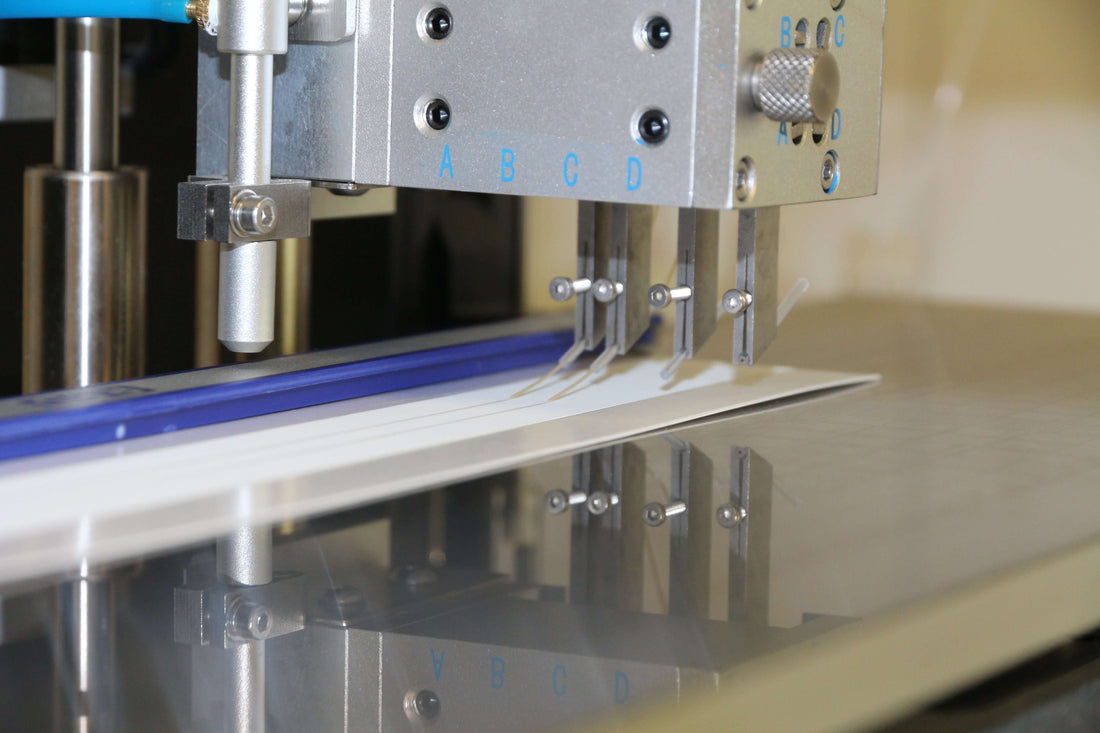R&D scientist Dr John Rees, explains how self-testing kits for prostate specific antigen (PSA) work.
Most blood, urine and swab tests in the SELFCHECK range work in the same way as pregnancy and COVID lateral-flow test kits. The principle is also known as an immunochromatographic assay and is based on the same immunoassay technology used in hospital labs.
The test cassette in your test kit consists of a number of materials that are impregnated with chemicals that are highly specific to the substance, such as prostate specific antigen (PSA) that is being measured.

Blood filter
The trouble is, the blood cells present in your blood sample would block the membranes used in the test if they weren’t removed first. In the lab this is easily solved, as your blood sample would be processed in a centrifuge to remove the blood cells, leaving just the plasma for testing. Of course, it would not be practical to have a centrifuge at home, so the self-test engineers have developed a special filter that traps the blood cells so that they cannot block further membranes in the device, but still allows the plasma from your sample to flow through the other membranes in the device. Most lateral flow type tests require the addition of a buffer solution which helps the sample flow through the device.
Conjugate pad
The next membrane that your sample flows through is known as a conjugate pad. The conjugate pad contains highly specific anti-PSA antibodies that are stuck to gold nanoparticles, which are red in colour. This gold-antibody conjugate reacts with any PSA that is in your plasma sample and flows into yet another membrane which is known as an immunoadsorbent.
Test and control lines
The immunoadsorbent is the membrane where you see your result and control line. At the test result line, which is often marked as a letter 'T' on the test cassette, the self-test engineers have irreversibly attached another highly specific anti-PSA antibody.
If higher than normal levels of PSA are present in your blood, the red coloured gold-antibody conjugate which is already bound to any PSA in your blood sample, then flows into the immunoadsorbent, and becomes permanently stuck to the anti-PSA antibody which is immobilised at the test result line. Conversly, if there are low, undetectable levels of PSA in the sample, then the red coloured antibody conjugate cannot bind at the test result line.
Higher than normal levels of PSA in your blood causes accumulation of those gold-antibody conjugates giving a pink or red line at the result line. The control line just captures excess conjugate which shows that the test has performed as expected.
Absorbent pad
At the opposite end to the blood separator pad is a further absorbent pad that helps to draw the sample through the membranes.
Due to the high affinity and high concentration of the antibodies used in immunochromatographic assays, a visual result is usually visible within minutes.
What does a high PSA result mean?
Although PSA is regarded as a marker for prostate cancer, a high PSA level is more likely to be due to other problems such as prostatitis, an enlarged prostate or a urine infection.
Before you decide to have a PSA test, it is important to be aware that about 3 in 4 men with a raised PSA level will not have cancer and around 1 in 7 men with a normal PSA level will have prostate cancer. It is important that you are aware of the pros and cons of PSA testing before you decide to test (1).
Pros:
- it may reassure you if the test result is normal
- it can find early signs of cancer, meaning you can get treated early
- PSA testing may reduce your risk of dying if you do have cancer
Cons:
- it can miss some cancers and provide false reassurance
- it may lead to unnecessary worry and medical tests if there's no cancer
- it cannot tell the difference between slow-growing and fast-growing cancers
- it may make you worry by finding a slow-growing cancer that may never cause any problems
In the UK, men over 50 years without symptoms, can request a PSA test from their doctor. Nevertheless, if you have an elevated result with a self-test kit, you are encouraged to speak with your doctor.
About SELFCHECK
The SELFCHECK range of health checks are assembled in the UK according to the gold standard quality system for medical devices, giving you peace-of-mind that your result is reliable, and know that you will have access to first-class customer care. All medical components in SELFCHECK tests are manufactured in the UK or EU. Our SELFCHECK technical experts are keen to help if you have any questions as to how your test works or interpret your results.
Find out more about the SELFCHECK Prostate Health Test.
Dr Rees is a scientist who has been developing medical tests for over 30 years, is a member of the British Society for Immunology, British Society for Allergy & Clinical Immunology, Eurostars Technical Expert and author of numerous patents for medical devices.
References
1) https://www.nhs.uk/conditions/prostate-cancer/should-i-have-psa-test/

